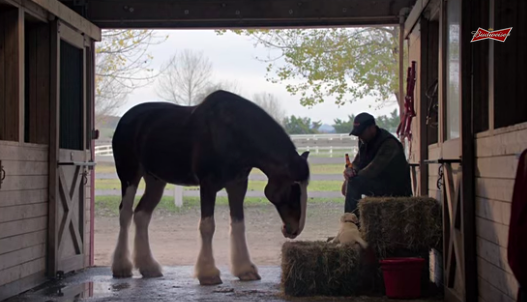
Another year, another line up of very, vey expensive ad spots on very, very expensive TV inventory.
The mind boggles.
Herewith, some takeaways from this year’s #BrandBowl.
RTM Goes Dark: The Super Bowl and real-time marketing have been synonymous since the game two years ago, when the lights went out and Oreo’s infamous tweet went viral. This year afforded brands no such opportunity, but consumer real-time reactions were overwhelming dark and directed at Nationwide. According to Amobee, there were close to a quarter of a million social mentions – the overwhelming majority negative – about the spot featuring a dead little boy reflecting on all that he would never grow up to do. So negative was the sentiment that the company issued a statement the following morning defending the spot, saying it wanted to “start a conversation” about safety.
The Art of the Tease: $4.5M is a lot of money to pay to air an ad that, effectively, has a broadcast life equivalent of a fruit fly. One obvious strategy that has become de rigeur in recent years is to accord the spot perpetual life – and views – on YouTube. Budweiser went one better this year by sharing its hyper-adorable “Lost Dog” spot before the big game, scoring close to 30M views on Facebook and YouTube before Sunday.
Far from losing by giving it away, the earned media buzz was palpable. You could almost hear America collectively shhh-ing one another Sunday night, “Quiet, you guys – you have to see this one!” #Win. Thanks, social media.
What calls-to-action? Superficially, it looked like the #HashtagBowl, but Salesforce.com’s Jeff Rohrs published some excellent comparative statistics on the decreasing calls-to-action in Super Bowl spots. Fifteen years ago we were shaking out heads when Super Bowl advertisers didn’t bother to insert an URL. This year, as Jeff points out, when there was a call-to-action such as a hashtag in a spot, it tended to appear on the screen for a mere second. That advertisers can be so nonchalant and fiscally irresponsible when it comes to engagement, amplification, and moving consumers down the funnel into other brand touches boggles the mind.
The Short Purse-strings Approach Rather than advertise, many brands chose to be there to maintain relevance and relationships with their audience during the big game. M&Ms knows it can’t top two years ago for a while, at least, but still engages via Twitter. AT&T responded to users mentioning rivals (and advertisers) Verizon and T-Mobile during the game. The most notable brand exploiting the Super Bowl with zero media buy may have been PETA, with an animal rights Twitter comment on every spot and game moment. The organization compiled these into a blog post Monday morning.
Here’s some intel I’m still waiting for from this year’s game:
Cord-cutter stats: NBC allowed PC and tablet users to stream the game this year, but that meant not seeing the ads, or at least seeing them on a separate page just after their aired on broadcast. The Super Bowl is a pretty social event, but it would be illuminating to see how many viewers stream, and how that stream swells, in coming years. Streaming will change the game. It’s hard to multitask on a tablet, cumbersome to watch and tweet and Facebook even on a computer (my personal viewing experience last Sunday – some of us are deeply grateful for the football-free experience). It should be noted that NBC did not allow phones to stream the game.
Squarespace’s Dreaming with Jeff campaign: The year’s most baffling spot, and one of the few that sent viewers to a web site (rather than encouraged social media resonance). Wonder how many people visited, and bought the album?
What you could get elsewhere for $4.5M? The WSJ has a sobering take.
This post also published on the Altimeter Group blog
